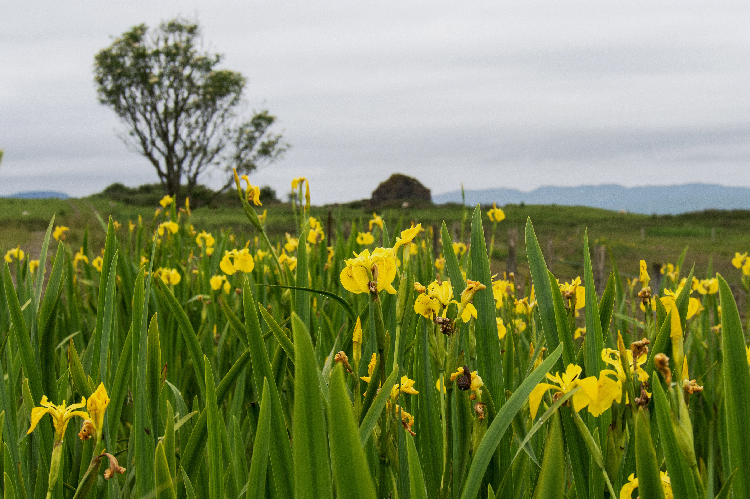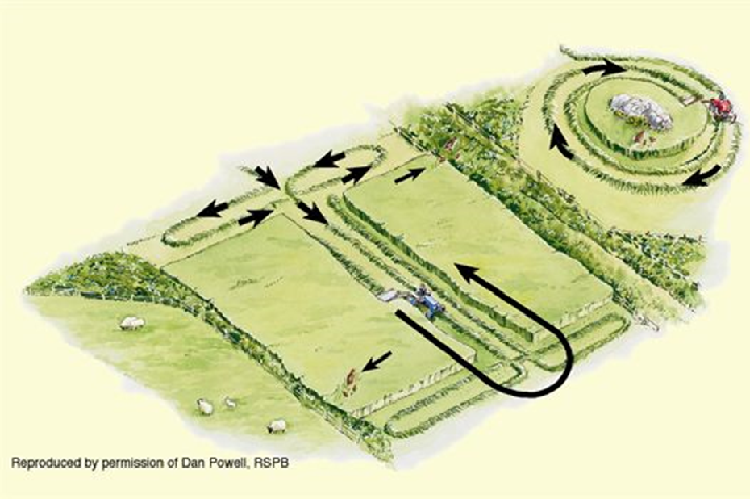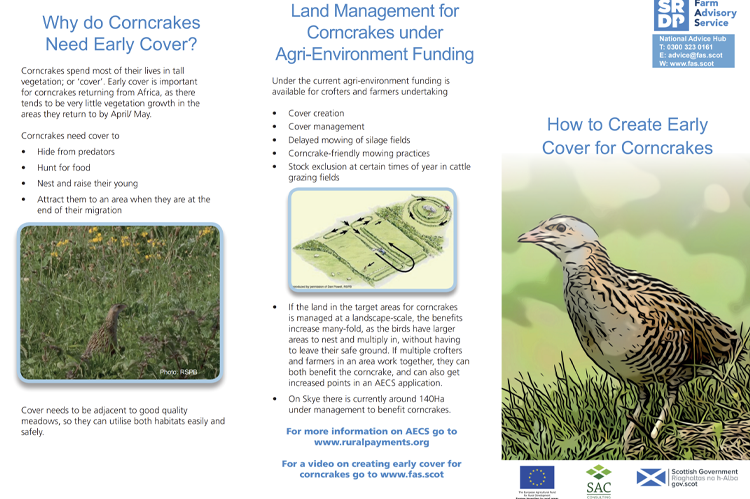Corncrakes
Download a pdf copy of this Information Note
Action Points
Corncrakes have been declining rapidly from the 20th century due to farm mechanisation.
They require:
- Tall vegetation in which to hide all year as they are secretive birds.
- Early cover when they arrive from migration in March.
- Undisturbed suitable cover to raise their first brood in vegetation such as nettle beds or flag Iris
- Open tall vegetation in meadows or arable fields to raise their second brood in the summer
- Mowing in a way to allow the chicks to run into adjacent vegetation.
- Late mowing to enable the chicks to escape.
Habitat Requirements
Corncrakes generally require
- Areas of suitable tall vegetation, ensuring that sufficient tall vegetation is present in spring and autumn as well as in mid-summer. Open vegetation such as nettles, flag iris or cow parsley is best with the aim to have this vegetation at least 20cm high by April
- Tall arable vegetation in the summer as long as the date of mowing is delayed as late in the year as possible .
- Cutting from the inside of the field out. Up to about 60 per cent of chicks are killed by usual mowing practices because they are reluctant to escape across parts of the field that are already cut. Chicks may be at risk from mowing several times before they can fly as successive fields are mowed. Alternative mowing methods can reduce this risk substantially.

Management Requirements to Benefit Corncrakes
Early and late cover
- Corncrakes spend most of their lives in tall vegetation; or ‘cover’. Early cover is important for corncrakes returning from Africa, as there tends to be very little vegetation growth in the areas they return to by April/ May.
- Corncrakes need cover to hide from predators, hunt for food, nest and raise their first brood of chicks.
- Cover needs to be adjacent to good quality meadows, so they can utilise both habitats easily and safely.
- Species that grow in an open structure such as Nettle and Flag iris are suitable for cover. Dense growing species such as rushes or bracken is not suitable.
- Ceasing agricultural operations, including grazing, from 15 May will allow corncrake to use the grassland for breeding without disturbance
Late Cutting
- Delaying the date of mowing can increase breeding success markedly. Corncrakes are at high risk of being killed when fields are mown so choose as late a cutting date as possible.
- Early mowing can destroy nests but mowing after 1st September will save nests and chicks
Cutting from centre of field
- Up to about 60 per cent of chicks are killed by usual mowing practices because they are reluctant to escape across parts of the field that are already cut. Alternative mowing methods can reduce this risk substantially.
- Using another method that allows chicks to escape, increases the proportion of chicks that survive mowing.

Corncrake Facts
Corncrakes lifespan is 3 years maximum so they must produce a large number of offspring for the population to survive
This Schedule 1 species is very secretive, spending its time hidden in tall vegetation, its presence only betrayed by its rasping call.
Chicks become independent of their mother at 10-15 days, though the young are fully fledged only at 34-38 days after hatching
Key Messages
Corncrakes need suitable undisturbed early cover as they arrive from migration in April. They will raise their first brood here before moving to meadows or arable crops where they need enough time to raise a second brood before the field is cut.
Corncrake Cover Advice
If you need advice on how to support corncrake cover, visit our Corncrake Cover Advice page, which allows you to get targeted advice on any corncrake cover areas that are you having problems with. Following submission of a form with a photo, we will get in touch with you to give you tailored advice.
Additional FAS Publications
Other Related Resources
Sign up to the FAS newsletter
Receive updates on news, events and publications from Scotland’s Farm Advisory Service

